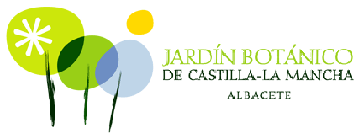Resumen
Corolla color in Gentiana lutea L. exhibits a yellow/orange variation. We previously demonstrated that the orange petal color of G. lutea L. var. aurantiaca is predominantly caused by newly synthesized pelargonidin glycosides that confer a reddish hue to the yellow background color, derived from the carotenoids. However, the anthocyanin molecules of these pelargonidin glycosides are not yet fully identified and characterized. Here, we investigated the regulation, content and type of anthocyanins determining the petal coloration of the orange-flowered G. lutea L. var. aurantiaca. Anthocyanins from the petals of G. lutea L. var. aurantiaca were characterized and quantified by HPLC-ESI-MS/MS (High-performance liquid chromatography-electrospray ionization-tandem mass spectrometry) coupled with a diode array detector in flowers at three different stages of development (S1, S3 and S5). Eleven pelargonidin derivatives were identified in the petals of G. lutea L. var. aurantiaca for the first time, but quantitative and qualitative differences were observed at each developmental stage. The highest levels of these pelargonidin derivatives were reached at the fully open flower stage (S5) where all anthocyanins were detected. In contrast, not all the anthocyanins were detected at the budlet stage (S1) and mature bud stage (S3) and those corresponded to more complex pelargonidin derivatives. The major pelargonidin derivatives found at all the stages were pelargonidin 3-O-glucoside, pelargonidin 3,5-O-diglucoside and pelargonidin 3-O-rutinoside. Furthermore, the expression of DFR (dihydroflavonol 4-reductase), ANS (anthocyanidin synthase), 3GT (UDP-glucose:flavonoid 3-O-glucosyltransferase), 5GT (UDP-glucose:flavonoid 5-O-glucosyltransferase) and 5AT (anthocyanin 5-aromatic acyltransferase) genes was analyzed in the petals of three developmental stages, showing that the expression level of DFR, ANS and 3GT parallels the accumulation of the pelargonidin glucosides. Overall, this study enhances the knowledge of the biochemical basis of flower coloration in Gentiana species, and lays a foundation for breeding of flower color and genetic variation studies on Gentiana varieties


Leave a Reply